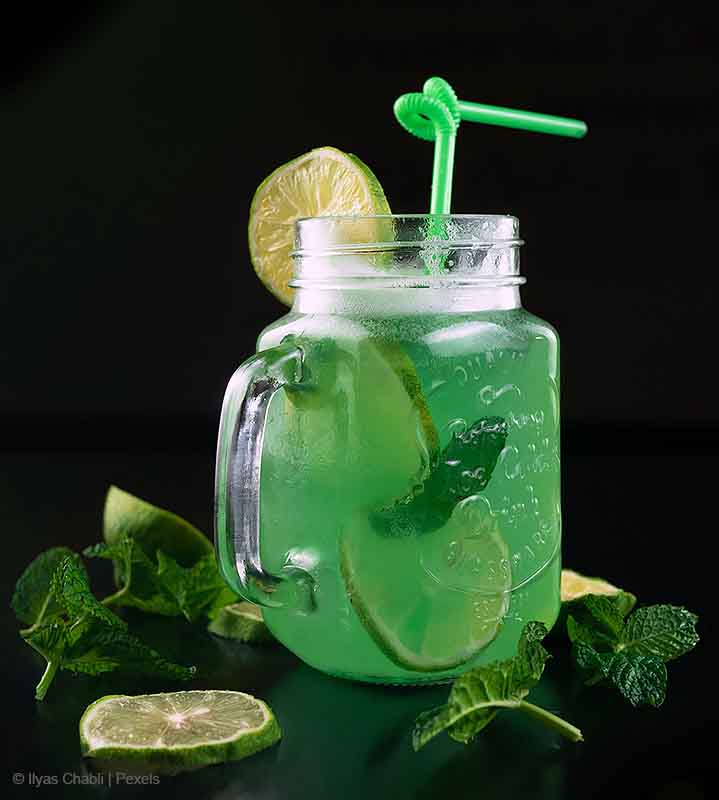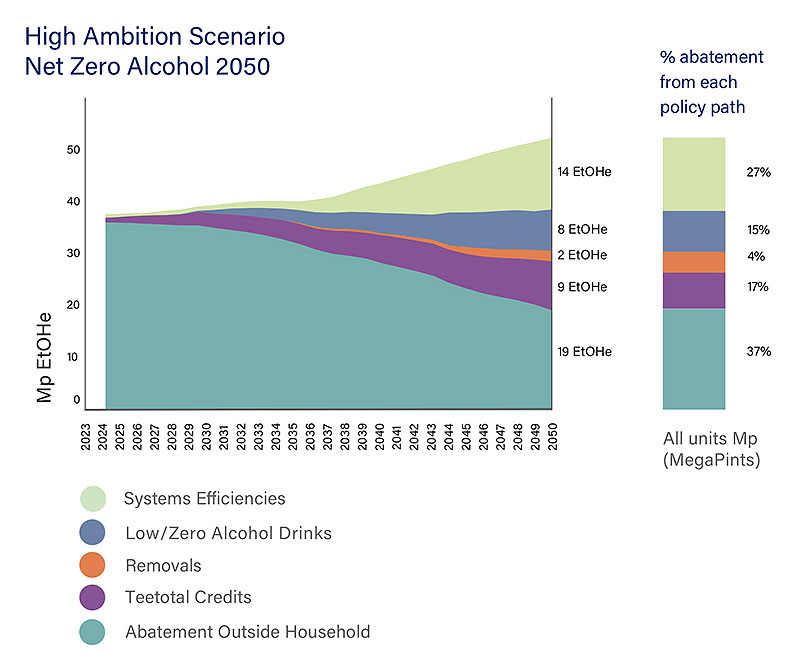Now we’re into the run-up to Christmas it’s time to think about celebrating. For many of us, no celebration is complete without a good drink.
But we’ve also heard increasing warnings from scientists about the future harms of alcohol and in the light of the landmark deal agreed at the recent COP (Committee of the Publicans – held down the Dog and Duck), to transition away from a dependence upon alcohol, it’s very clear that we must reduce our alcohol use (as per the recent agreement use reduction is preferred over consumption reduction) – and set a reduction pathway towards Net Zero Alcohol.
Zero Alcohol Future?
An absolute zero-alcohol future is not realistic – especially in some high-alcohol (hard to abate) households – but it is possible to imagine a net-zero/low-alcohol future based upon partnership and collaboration.
So, we’re pleased to announce our household target for Net Zero Alcohol by 2050 (Net Zero Alcohol). This is sufficiently far in the future to be tolerable and realistic – but crucially also includes the upcoming Christmas celebrations – so rest assured they’re safely covered.
To ensure a smooth transition it’s essential not to squander any good opportunities for a booze up, so our calculations do predict an overall growth in consumption by 2050. However, we’re confident our strategy will deliver, when considered in an appropriately wide context, a significant lowering in alcohol intensity over this period – even if overall consumption increases for decades.
The truth about consumption?
Scientists will have you believe that decreasing overall alcohol consumption is fundamental to a Net Zero Alcohol future. But we believe that it is overall alcohol intensity which is the true measure of success, especially as we aspire to a projected increase in overall drinking activity in the run-up to this Christmas, to 2050 – and to be honest beyond.

USE OF STANDARDS
We are committed to the use of standards, so all alcohol consumption footprints will be accounted for using the Household Alcohol Protocol Lowering Ethanol Safely System (HAPLESS) – developed by the Global Wine Alliance, World Beer Council, and World Wide Fund for Liquor.
STANDARD UNITS
Not to be confused with ‘Units of Alcohol’ which were developed by so-called experts and which we believe have largely been accepted as a hoax, the HAPLESS Protocol recognises that different types of alcohol can force inebriation so the standard unit for accounting purposes is EtOHe (Ethanol equivalents). This has the twin added benefits of looking suitably technical/scientific and being hard to understand.
UNDERSTANDING ALCOHOL CONSUMPTION SCOPES
Scope 1 – alcohol opened and consumed directly in the household.
Scope 2 – alcohol accessed or consumed indirectly in the household – i.e., brought round by friends, consumed via food, or accidentally.
Scope 3 – alcohol/drinks originating outside the household – i.e., pub, parties, events, etc. (Includes fugitive consumption too).
Strategic framework to realise our vision
Our Net Zero Alcohol goal will not be easy to reach but we believe it can be achieved if you all try hard enough – so we have developed a high ambition scenario (see figure below).
We have a clear strategic goal (in our household at least) and multiple solution pathways to achieving it through:
- Inter-Household Leadership
- Delivery in Partnership
- Maximisation of Opportunities.
To deliver our goal we have identified a strategic framework which will flexibly deploy multiple policy solutions, as appropriate, to realise our vision. So why not pour a glass of your favourite tipple, sit down, and take a read.
Zero Alcohol Drinks
Focusing on low and zero-alcohol drinks, while it’s currently unclear whether we actually like drinking them, we’ll rapidly (after Christmas or perhaps the next one) conduct a review of options and feasibility for these technologies.
Systems Efficiencies & Transition
We realise consumption takes place within the context of a wider system – so we have factored in the actions of others to help us deliver our targets. Our calculations suggest that if we count the alcohol not consumed by the children, the baby and the cat – significant savings can be made. Multiplied by the next (combined) 29 years before they collectively reach 18, we’re also confidently assuming that we can influence them to not consume any alcohol in the future.

After all, it’s our party and we can drink if we want to – but the kids are developing and need to embrace their new Net Zero Alcohol future. Frankly (and hard decisions must be made) they just need to suck it up (or not…).
Our innovations initiative has also innovated!
This means we’re going to drink everything through a straw (where feasible) as studies have shown this can significantly increase the efficiency of consumption. Given sustainability concerns over single-use plastics we’re going to prioritise using green straws – although pragmatically other colours can be used ‘in transition’.

Our strategy prioritises the use of green straws to increase consumption efficiency and reduce local T&D (Transport & Distribution) losses.
Removals & Teetotal Credits (TM)
Against the background of projected increased consumption, permanent removals from the system are also necessary. We want to go beyond offsets so have taken the opportunity to include in our calculations the alcohol not drunk by our new teetotal neighbours. Assuming they continue to live next door for 26 years this will make a considerable contribution to our shared Net Zero Alcohol future, especially if they have a large family and all manage to stay on the wagon.
But there is an opportunity to go even further. We believe that there are great opportunities in the ‘Teetotal Credits’ market – for us to create Certified Teetotal CreditsTM (CTCs), based upon signed commitments for lifelong abstinence from individuals and wider communities.
This is not a new idea; abstinence pledges have a long and extremely successful history of guaranteeing the lifelong avoidance of alcohol. We plan to take this success to the next level through the creation of a market for Certified Teetotal Credits, providing much-needed capacity within the global system to balance entirely necessary/unavoidable alcohol consumption with the need for a Net Zero Alcohol future as well as essential capital for investments.
Abatement outside household
We’re proud of this initiative. We predict that the future outstanding success of the dry January Programme 2026-2050 means we can project reduced average totalised consumption in our neighbourhood by 189%! This achievement is reflected in our target planning.
Our strategic backstop – Genie in a Lamp
The pillars of our strategy are solid, and will definitely (probably), maybe deliver our ambitious goal. But just in case we stray from our target for a Net Zero Alcohol future, we will deploy our secret weapon, a Genie In A Lamp (GIAL).
Genies in lamps are a technology with a documented history of granting impossible and implausible wishes.

We also believe that they are scalable too, as genies are ALL powerful.
Our R&D intends to ensure that we have access to GIAL by searching all likely caves for hidden treasure hoards that may contain dusty lamps in need of a polish.
Once we have GIAL in-house, we will implement immediate genie activation and initiate the proven 3 wishes mode. The first two wishes will be specifically tailored to fill any gaps in the deployment of our strategic Net Zero Alcohol policies. However, the final wish is clear, we will wish that we didn’t have to do this in the first place.

Conclusion
We will use our high-ambition scenario to set an in-household EtOHe consumption reduction trajectory for our house from 2025 to 2050. We believe that setting an in-house trajectory provides clear messaging on the need for progress from the street, as well as clarity on the capacity required to meet Net Zero Alcohol – though we do recognise that at times double vision may occur.
We are confident that others will come on board to embrace this bright new future – cheers!

NOTES
- While we have had Scope 1 and 2 domestic reduction targets for several years, we have realised this is not enough. Challenges have included getting all stakeholders on board (i.e., spouses and significant others) and the complexities of dealing with Scope 3 consumption.
- Territorial versus absolute consumption – The Net Zero Alcohol Strategy
ignoresomits alcohol imports from other locations and territories. These may be significant – but once we’ve had a few we’re not really that bothered to be honest. - As consumption is very complex to calculate and attribute, we follow the HAPLESS Protocol methodology (see above) and therefore targets are based upon volume consumed using the economic (spend data) method – but don’t worry if you didn’t get a receipt…
- Alcohol is supplied in metric SI units but often consumed in imperial pints. To ensure comparability of data, all volumes are converted to pints. In the case of wine (bottle not case – keep up) as 750ml falls between 1 and 2 full pints, this is typically rounded down to 1 pint.
- T&D losses – transmission and distribution losses are to be included in Scope 2 calculations where possible or forgotten about if consumption intensity is too high.
FOOTNOTES
* Satire alert.
This is of course satirical and should not be taken seriously under any circumstances **.
** No, really.
*** Any resemblance to actual strategies, living or dead, is purely coincidental.
SERIOUS NOTES
Alcohol is of course enjoyed by many but can also be very damaging to health and wellbeing at the personal and wider social level. Our intention is to satirise attitudes to fossil fuel addiction and wish-based Net Zero Strategies, and not in any way to downplay the very real harm to individuals and society that alcohol consumption can give rise to.

 Sustainable Aviation?
Sustainable Aviation?